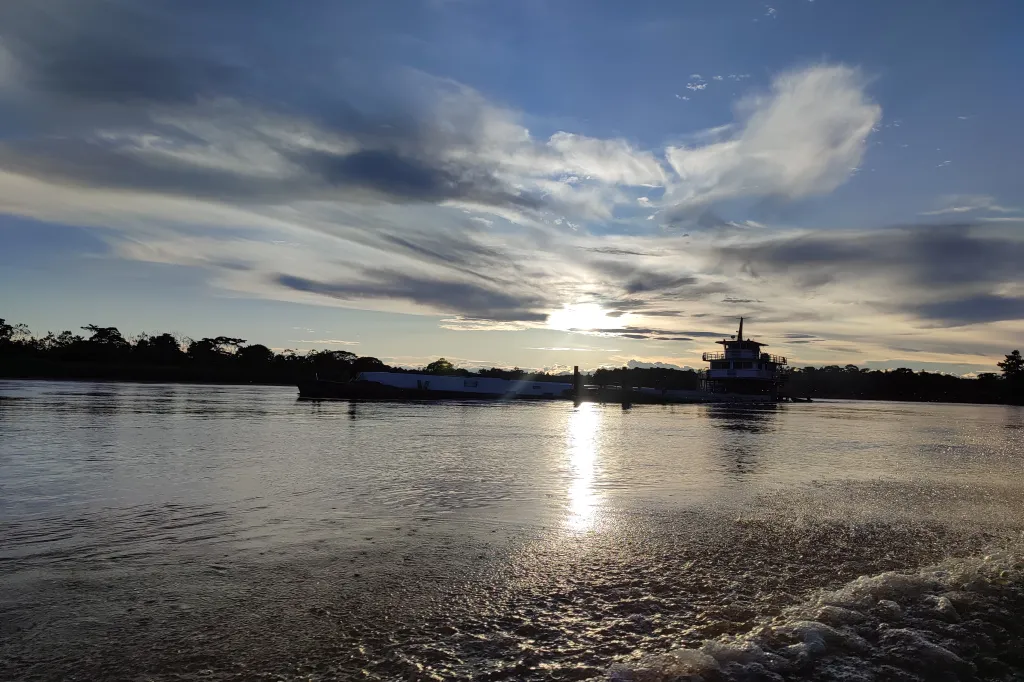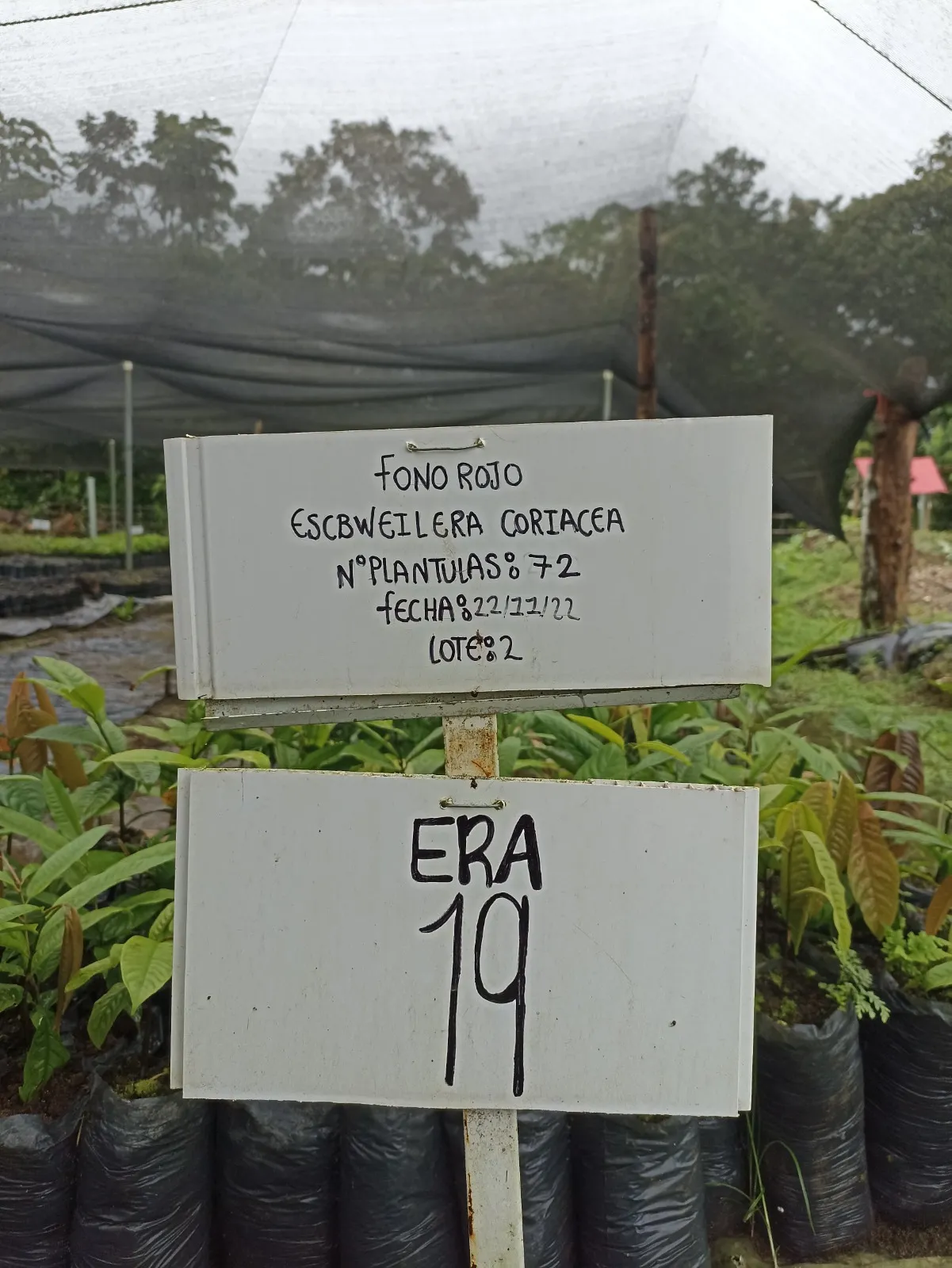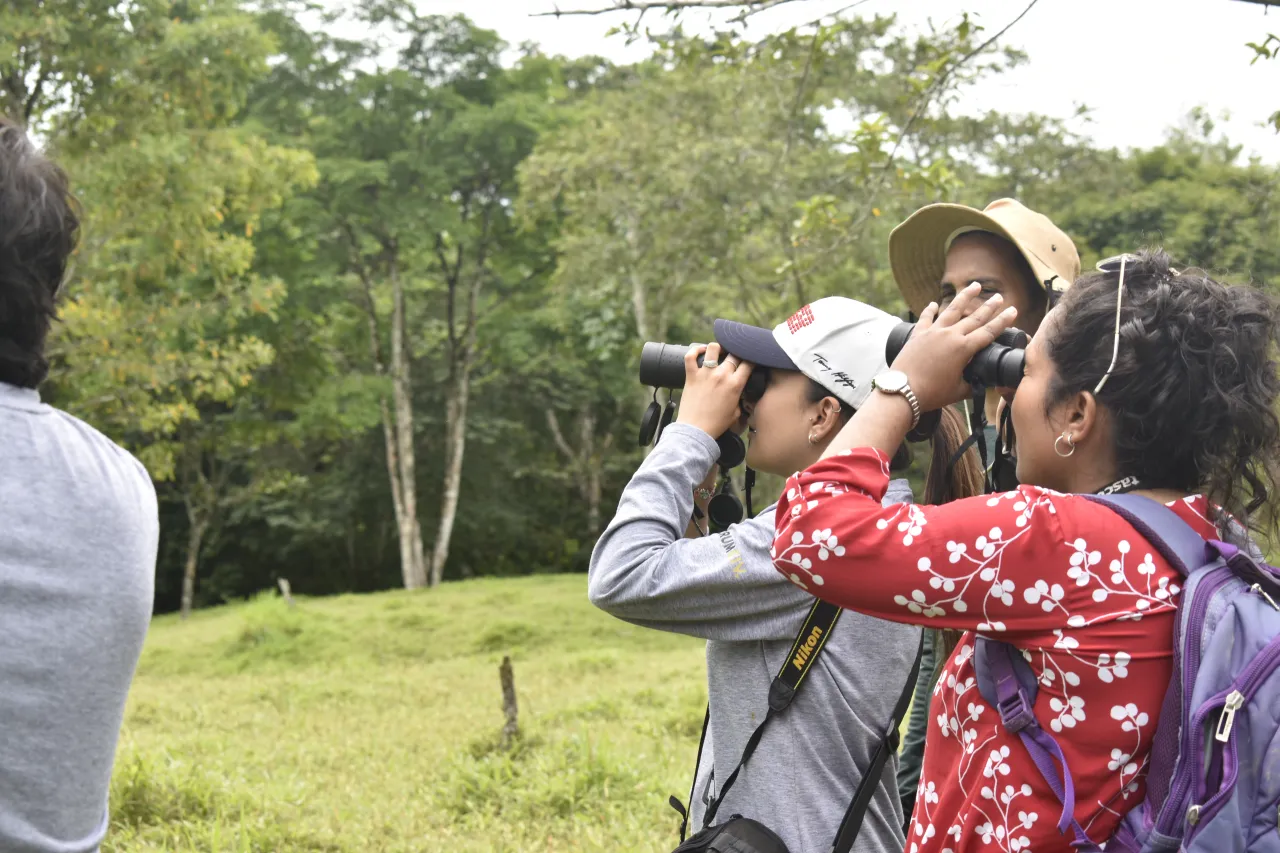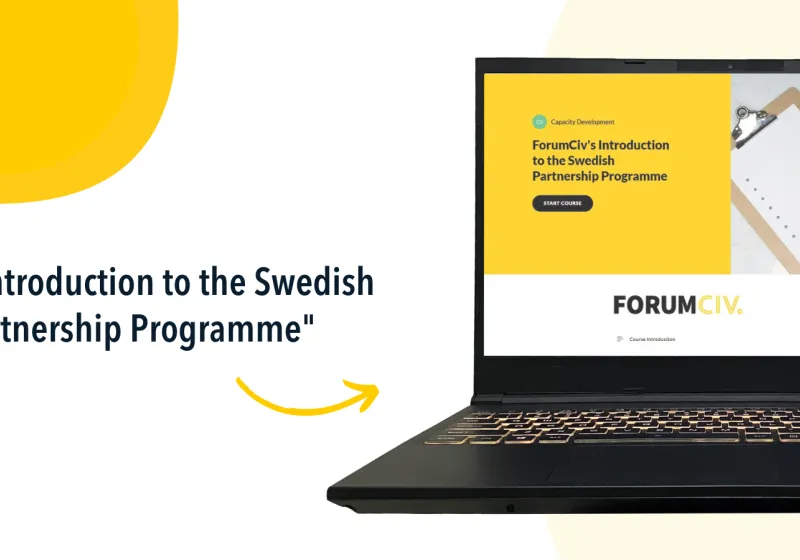Hutches of life
By César Augusto Muñoz M. Program Coordinator ForumCiv LAC

Every year in July the rains at the headwaters of the Putumayo River cause a major flood. The flow of the tributary returns to the places where it once flowed; the locals call this fact "las conejeras" (the rabbit hutches). This year's flood was less than expected. Angie, a member of ADISPA's (peasant organization for the sustainable development of the Amazon Pearl Peasant Reserve Zone - ZRCPA its Spanish acronym) technical group and one of the founders of the youth committee of the ZRCPA, confirms that these changes in the river may be a manifestation of the climatic effects that the Amazon is suffering. She is afraid because in recent years it has been seen that a small hutch is the precursor of a very large one that generates overflows, floods and strong effects on the people, animals and crops along the riverbanks.
As our boat was moving towards the Pedregosa path, another colleague passed me her phone so that I could check some photos on Whatsapp. Seeing my astonished face, she reaffirms "yes, they were all young men". The photos I'm watching are the result of the strong combats that have been happening in the municipality of Puerto Guzmán between armed groups that make presence in the region, on the border with Caquetá. The official information confirms between 8 and 10 dead, but the neighbouring communities speak of many more people.
As I look at the lifeless faces of those boys in the photos, I turn my gaze to Angie and Norlex or "Plateadito" (“little silvery”) as he is called in the organisation. He is responsible for looking after the Tierra Nueva nursery, where thousands of native tree seedlings and seeds are reproduced and given to peasant families to restore the forest.

Unlike the young people in the pictures, Angie and "Plateadito" are full of life and knowledge. They teach us about forest restoration through the planting of native species by peasant families committed to biological connectivity. Faced with the lack of universities in the Putumayo department, these young people left to study in other cities and returned to continue working on their land and with their people. In this way, the scientific knowledge of these young professionals is combined with the ancestral knowledge of the local people who have been learning about the tropical rainforest for decades.
This harvest of young and old sages is the result of decades of work by the peasant organisation. The cycle is more complex than it seems; the children of the area begin to listen and learn about the forest and its species from their teachers and wise men and women. In this case, the native melipona bees have been teaching allies, their hives surround the schools covered with trees and flowers and are literally sweet boards for playful learning. This knowledge is then transformed into cultural displays through which children and youth represent aspects of the peasant identity.
In the meantime, the teenagers work with the peasant organisation to find places in universities or study centres (most of them outside the Putumayo department) that will allow them to continue learning and certify the knowledge they already have. At the end of their formal studies, they return to the area as professionals and join the technical team. Jani Silva, ADISPA's president, makes it clear that the first step to becoming part of the technical team is to recognise, respect and value the knowledge of the peasants, leaving aside academic arrogance and articulating ancestral knowledge with scientific knowledge.
Rubén, another of JURADIPA's founders (the youth committee) and currently a member of the organisation's technical team, sums it up as follows: "We were born in this village, we studied at school here, we have been in the peasant organisation from the age of 13, we went to study at universities, we did our technical training there, but we already had our political training here in the organisation".

The women come together in safe spaces to guarantee their economic autonomy through peasant work; having an organic vegetable garden, looking after the hens and marketing the eggs are some of the forms of savings and credit that they learn and teach in the training sessions led by MEMPA, the women committee.
On the other hand, the peasant promoters, made up of children, young people and adults (men and women), are a figure the organisation has created so that these people can become more technical and receive permanent advice on their cultivation practices, transformation and care of the ecosystems. The results are evident in the improvement in the standard of living of the peasant family as part of the follow-up to the productive and social projects that they implement. Finally, the "sabedores y sabedoras" (sage men and women) are those people who have the experience and ancestral knowledge of the forest. They accompany and advise the technical team, the women of MEMPA, the promoters and are an integral part of ADISPA's organisational structure.
Walking and chatting with people from the other organisations participating in the agro-environmental fair that brings us together, I realise that this complex model of peasant life, education and culture is replicated in a similar way in each organisation, depending on the ecosystemic characteristics of their context.
In my case, I am more familiar with the training cycles carried out by organisations in the páramo (moors) and the high Andean forest on water management. I learned from the ideas and dreams of Luz Perly, an Araucanian leader who unfortunately is no longer with us. She dreamt of creating in the Orinoco region the first Peasant University with living boards. In the Andean region, the communities are located in the houses of peasant and popular culture. In the upper part of the Magdalena River or the "Alto Yuma", the “Bacteria Union”, a collective of young professionals from the south of Huila, teach and learn from peasant families about the use and management of micro-organisms to restore the soil. In the Andean-Amazon region, farming families adopt endemic animals such as the mico bonito from Caquetá, and peace signatories use nurseries and networking as a tool for protection and mutual learning. All these actions are centred on reproduction, conservation and respect for the life cycles of all species.
In a similar way to the floods that mark the waters of the Putumayo river and its tributaries and that cyclically feed the rabbit hutches or “conejeras”, the social processes of the peasantry are being renewed with young leaders who seem to recognise and rediscover the old channels of struggle and defence of the territory. Supporting and protecting these processes in the midst of the humanitarian crisis (it is no secret that the war and its effects continue to be a daily dynamic in the departments of Arauca, Huila, Caquetá, and Putumayo, among others), is a hope for this generation of young men and women to have "a second chance on Earth".
This is the first of two stories about Andean-Amazonian peasants and their ways of caring for, protecting and restoring ecosystems. These stories are based on the accompaniment of peasant organisations and particularly in the framework of the agro-environmental fair held on 22 and 23 July in the Zona de Reserva Campesina de la Perla Amazónica ZRCPA, led by the Asociación de Desarrollo Integral Sostenible de La Perla Amazónica -ADISPA- (Association for the Integral Sustainable Development of the Amazon Pearl). This is one of the activities of the Aremos Paz project, funded by the EU's European Peace Fund and the Swedish Embassy in Colombia.
Other recent articles

7 recommendations for EU policymakers after the development in Georgia
After the Law on Transparency of Foreign Influence in Georgia, here are seven concrete actions that EU Decision Makers need to take.

Kenya’s Chief Justice Hon. Martha Koome launches ForumCiv’s report on public policy gaps
“The findings from this research we are launching today stresses the importance of continuous tailormade trainings for all stakeholders involved in policy development from county officials to members...

New e-learning course presents the Swedish Partnership Programme
This course is especially relevant to newer organizations and/or those who have experienced challenges in various application processes. It presents the Swedish Partnership Programme.